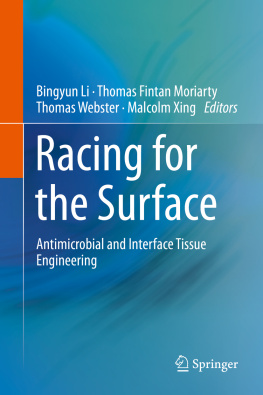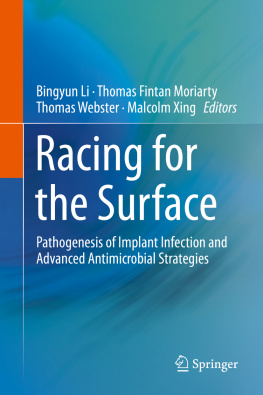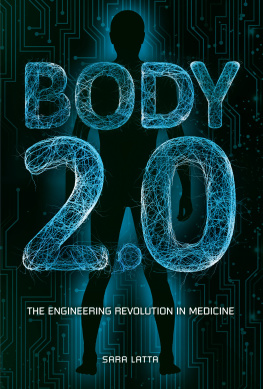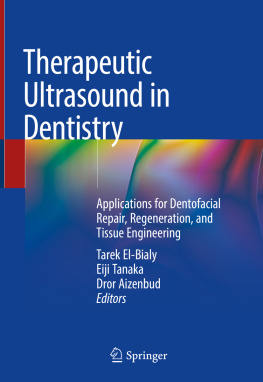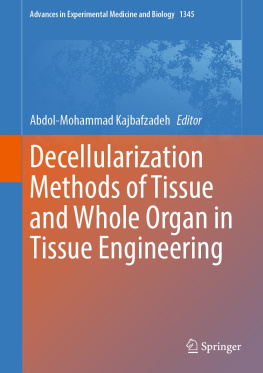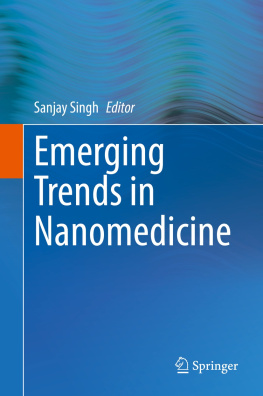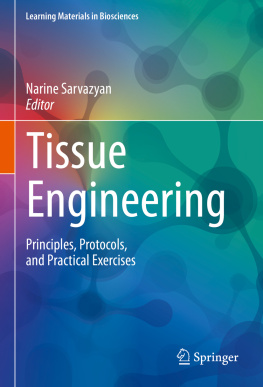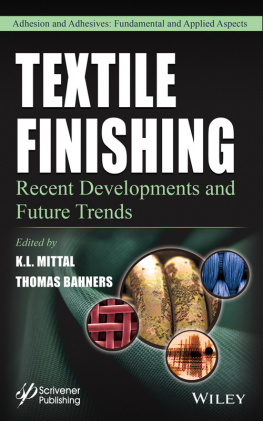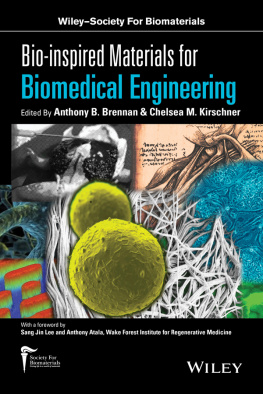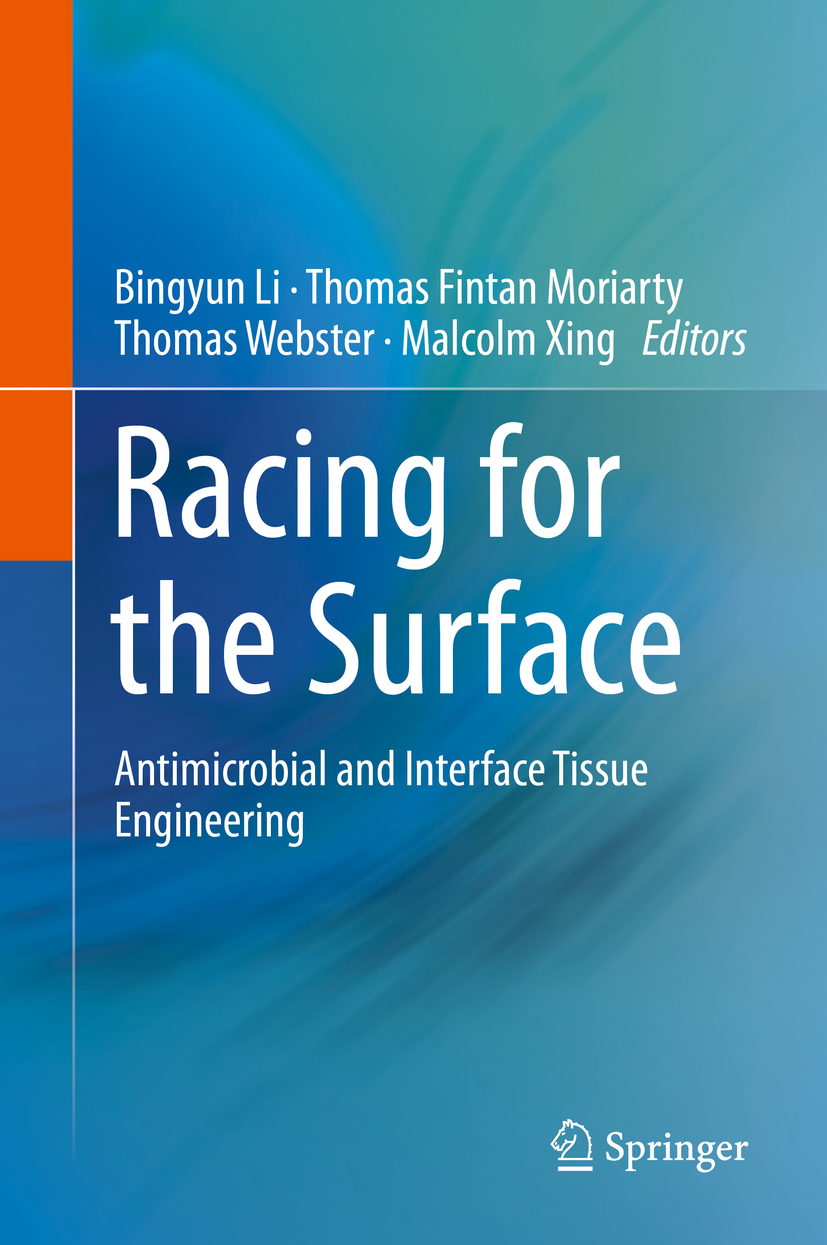Editors
Bingyun Li
Department of Orthopaedics School of Medicine, West Virginia University, Morgantown, WV, USA
Thomas Fintan Moriarty
AO Research Institute Davos, Davos Platz, Graubnden, Switzerland
Thomas Webster
Department of Chemical Engineering, Northeastern University, Boston, MA, USA
Malcolm Xing
Department of Mechanical Engineering, University of Manitoba, Winnipeg, MB, Canada
ISBN 978-3-030-34470-2 e-ISBN 978-3-030-34471-9
https://doi.org/10.1007/978-3-030-34471-9
Springer Nature Switzerland AG 2020
This work is subject to copyright. All rights are reserved by the Publisher, whether the whole or part of the material is concerned, specifically the rights of translation, reprinting, reuse of illustrations, recitation, broadcasting, reproduction on microfilms or in any other physical way, and transmission or information storage and retrieval, electronic adaptation, computer software, or by similar or dissimilar methodology now known or hereafter developed.
The use of general descriptive names, registered names, trademarks, service marks, etc. in this publication does not imply, even in the absence of a specific statement, that such names are exempt from the relevant protective laws and regulations and therefore free for general use.
The publisher, the authors, and the editors are safe to assume that the advice and information in this book are believed to be true and accurate at the date of publication. Neither the publisher nor the authors or the editors give a warranty, expressed or implied, with respect to the material contained herein or for any errors or omissions that may have been made. The publisher remains neutral with regard to jurisdictional claims in published maps and institutional affiliations.
This Springer imprint is published by the registered company Springer Nature Switzerland AG
The registered company address is: Gewerbestrasse 11, 6330 Cham, Switzerland
Foreword
Orthopedic and trauma surgery has been among the most innovative and successful areas of medicine in recent decades. Survival from major trauma and bone cancer has increased exponentially, and many older people can now retain their mobility and activities well beyond the expectations of past generations. However, we face major challenges with the complications of injury and surgery. Among these complications, infection and bone loss cause great disability for our patients. When they occur together, they produce chronic ill health, recurring need for medical intervention, social isolation, loss of income and employment, and a high risk of depression and mental disorder.
The problem of infected bone defects is now much more common than previously. Prior to 1990, many patients with severe head or chest trauma did not survive the initial resuscitation, so no reconstruction of their associated limb injuries was required. Similarly, primary bone cancer of the limbs was often treated with amputation. Now we need better reconstructive options to restore function for the survivors of major trauma and cancer.
We have made major strides in understanding the mechanisms behind fracture healing, bone regeneration, bacterial invasion, adhesion, biofilm formation, and clinical infection. This has allowed us to develop strategies to prevent bacterial colonisation, for the treatment of established infection and restoration of bone defects. However, our current treatments could not be regarded as patient-friendly. They often rely on prolonged hospital treatment with staged surgery, invasive bone grafting, use of toxic antimicrobials with frequent adverse effects, and bone stabilisation using cumbersome external fixation. In the best units, there are still failures with recurrence of infection in up to 20% of cases and late amputation rates of 10%.
This book focusses our attention on an attractive range of options for enhanced tissue engineering. The use of interactive biomaterials has been an aspiration of many surgeons and scientists for at least a century. It is fascinating to read that in 1932, Alexander Fleming noted the ability of tellurium to kill bacteria which were resistant to penicillin. Now we are investigating a plethora of materials, ions, and elements, which can interfere with bacterial physiology and help us with the rapidly advancing problem of antimicrobial resistance.
Initially, we asked little of our orthopedic materials. They needed to be biocompatible or at least bio-tolerant, with certain mechanical properties. But this evolved into the concept of bioactivity and biodegradability. Now we look for materials which can provide mechanical support, drug delivery, inhibition of certain cells or pathogenic organisms, and then allow remodelling into normal human tissue by induction of complex cellular pathways. This task is equivalent to the moon landing of 50 years ago!
The following chapters introduce novel ideas which will be fascinating for surgeons. The book is inspiring in the range of possibilities which await future clinicians. Anti-biofouling materials or bone-like multifunctional coatings are certainly engaging ideas. Better understanding of the natural mechanisms which prevent bacterial infection and promote tissue healing may allow us to exploit those areas of overlap which achieve both goals. The concept of using endogenous human responses to heal defects (in antibody-mediated osseous regeneration) promises to allow improved healing without the toxic effects of exogenous therapy. In general, a move from systemic therapy to local therapy within bones has already seen major improvements in clinical outcomes with reduced adverse effects.
The next phase of research in orthopedic biomaterials will be critical in establishing what is useful in clinical practice. It is interesting to show that materials can exhibit osteoinductive behaviour or antimicrobial properties under ideal laboratory conditions. This now needs to be tested in the more taxing clinical environment. Patients with multiple comorbid conditions, taking several disease modifying drugs, and being non-compliant with therapy will fully expose any weaknesses in the concepts. It is essential that scientists and surgeons learn to work together to direct the studies which will be required. Our patients need us to step up to this challenge.
Martin McNally
2019

